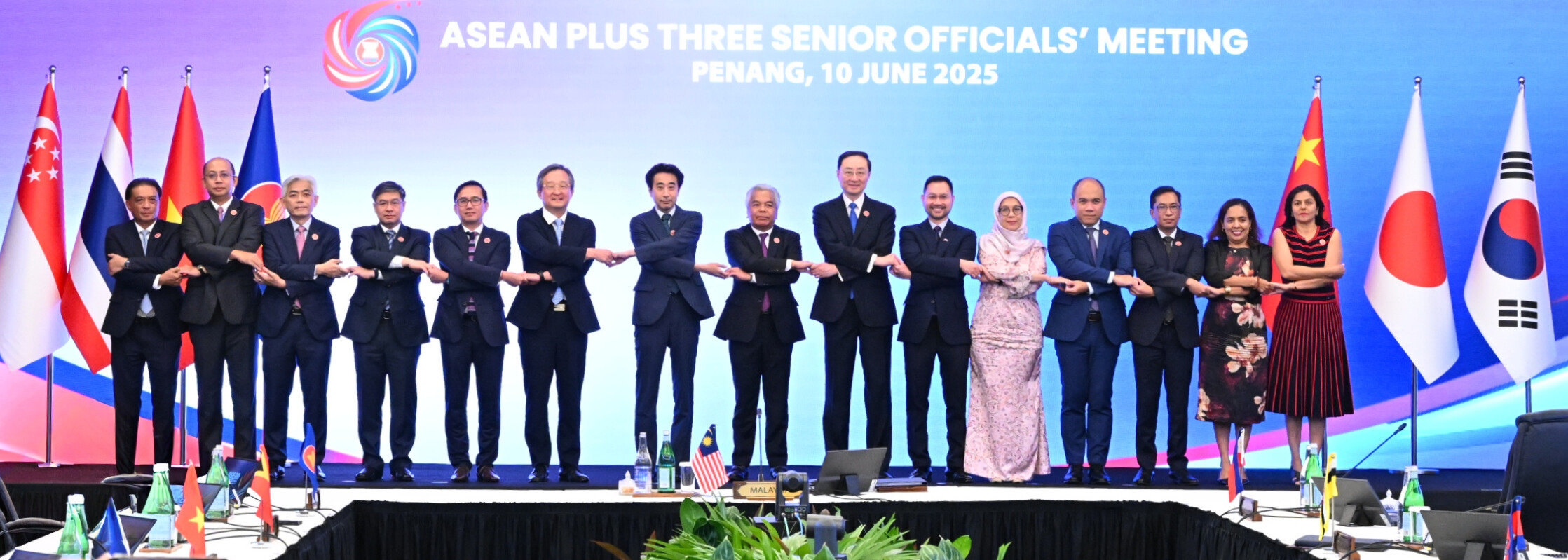
In times of geopolitical uncertainty, regional unity is the surest path forward. In July, the ASEAN+3 Macroeconomic Research Office (AMRO) released its updated outlook for the ten members of the Association of Southeast Asian Nations, plus China, Japan, and South Korea. AMRO revised down its growth forecasts for 2025 and 2026 to 3.8% and 3.6%, respectively, and highlighted the urgent need for greater regional integration.
Amid rising global turmoil, particularly surrounding US President Donald Trump’s tariff measures, ASEAN+3 countries have demonstrated remarkable resilience. In the first half of 2025, growth was buoyed by front-loaded exports, as businesses rushed to ship goods ahead of anticipated US tariff hikes. But this boost is expected to be short-lived, and its positive impact is already beginning to fade.
The unpredictability of Trump’s trade and economic policies has made planning increasingly difficult for businesses. Moreover, bilateral negotiations with the US administration have been marked by volatility and confusion, with tariff rates changing abruptly and without warning.
Despite these headwinds, domestic demand remains robust across most ASEAN economies, bolstered by favorable labor-market conditions and price stability. Financial markets have also held up well, with several ASEAN+3 currencies appreciating against the dollar amid mounting worries over US policy uncertainty. Since April, policymakers have taken preemptive steps: half of the region’s central banks have eased monetary policy, while several governments have implemented targeted fiscal measures to cushion the impact of potential trade shocks.
Still, several threats are clouding the near-term outlook for ASEAN+3, the most immediate of which is rising protectionism. AMRO’s scenario analysis suggests that regional growth could fall below 3% if US tariffs are extended to previously exempt sectors. Such a slowdown would mark the region’s weakest non-pandemic performance since the 1997 Asian financial crisis, underscoring its vulnerability to trade disruptions.
Adding to these challenges are tightening global financial conditions, driven by diverging monetary policies, commodity-price volatility linked to the Middle East crisis, and a trading system that is becoming increasingly fragmented. The result is a fragile economic landscape that will place ASEAN+3 economies and their policy frameworks under growing pressure in the months ahead.
As ASEAN+3 governments respond to this confluence of near-term challenges, they must also confront deeper structural shifts that will shape the region’s long-term growth trajectory. Chief among them is a demographic transition of historic proportions.
By 2050, one in four people in ASEAN+3 will be 65 or older. Population aging is projected to strain public finances, with fiscal costs ranging from 0.9% of GDP in Indonesia to 9.3% in South Korea, while also limiting governments’ ability to invest in productivity-enhancing infrastructure and human capital.
Climate change poses an equally urgent threat, as Myanmar, the Philippines, Vietnam, and Thailand rank among the world’s ten most climate-vulnerable economies. To mitigate the worst effects of the climate crisis, ASEAN+3 economies must complete the net-zero transition. Doing so will require not only massive infrastructure investments but also costly adaptation measures and careful management of transition risks, such as stranded assets in carbon-intensive industries – all without undermining long-term growth.
Perhaps the most troubling trend is the secular decline in the region’s growth potential. AMRO’s analysis finds that the potential growth rate of ASEAN+3 has declined from 6% to around 4% since the early 2000s, and could fall to 3% by 2050. This slowdown is primarily driven by weaker capital accumulation and sluggish productivity gains, indicating that the traditional growth model – heavily reliant on expanding labor and capital inputs – is running out of steam.
In the face of these intensifying pressures, regional integration is more vital than ever. As the global economic order continues to fragment, ASEAN+3 governments must foster cooperation and develop effective policy-coordination mechanisms.
They have already demonstrated the power of collective action. The Regional Comprehensive Economic Partnership, which entered into force in January 2022, now covers the world’s largest free-trade area and serves as a critical buffer against economic fragmentation. At the same time, regional financial cooperation has evolved from mere crisis management to resilience-building, with cross-border payment connectivity and local-currency settlement frameworks reducing reliance on third-country currencies. The Chiang Mai Initiative Multilateralisation is a prime example.
But these efforts must go further. ASEAN+3 must position itself as a pillar of stability and principled engagement by reaffirming its commitment to an open, transparent, and rules-based multilateral trading system, even as others turn away from it. The region must show that cooperation can deliver prosperity without compromising national sovereignty. In an interconnected world, resilience depends on the willingness to work together.
The next few years will test policymakers’ resolve. But with sound macroeconomic management, forward-looking structural reforms, and a firm commitment to multilateralism, ASEAN+3 countries can weather unfavorable conditions and lay the foundation for sustained, inclusive growth.
Copyright: Project Syndicate, 2025.
www.project-syndicate.org
